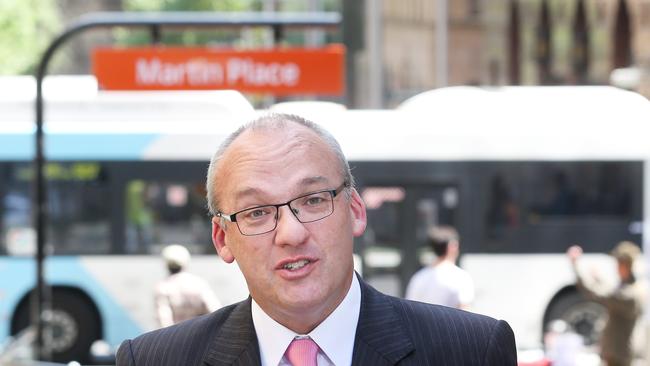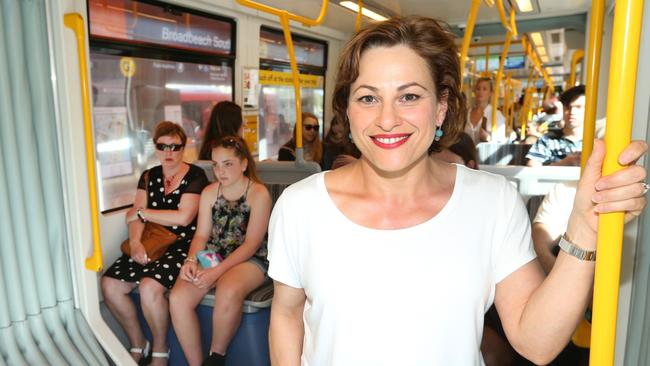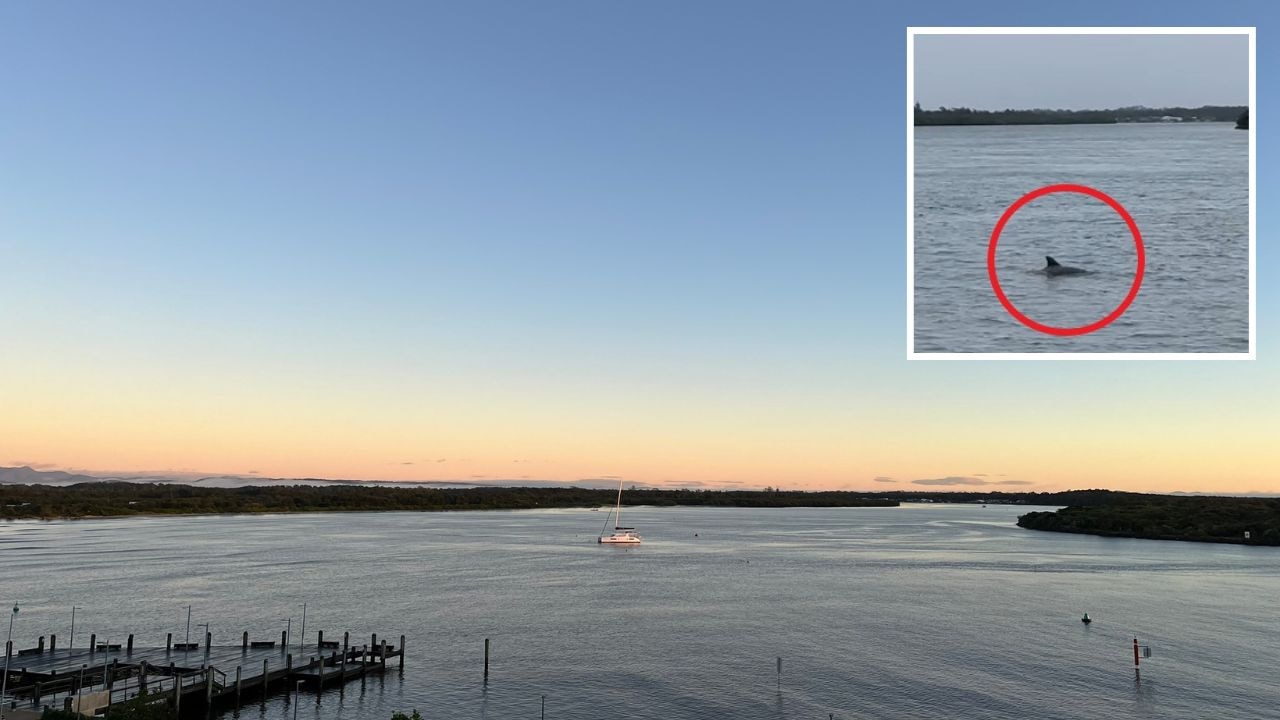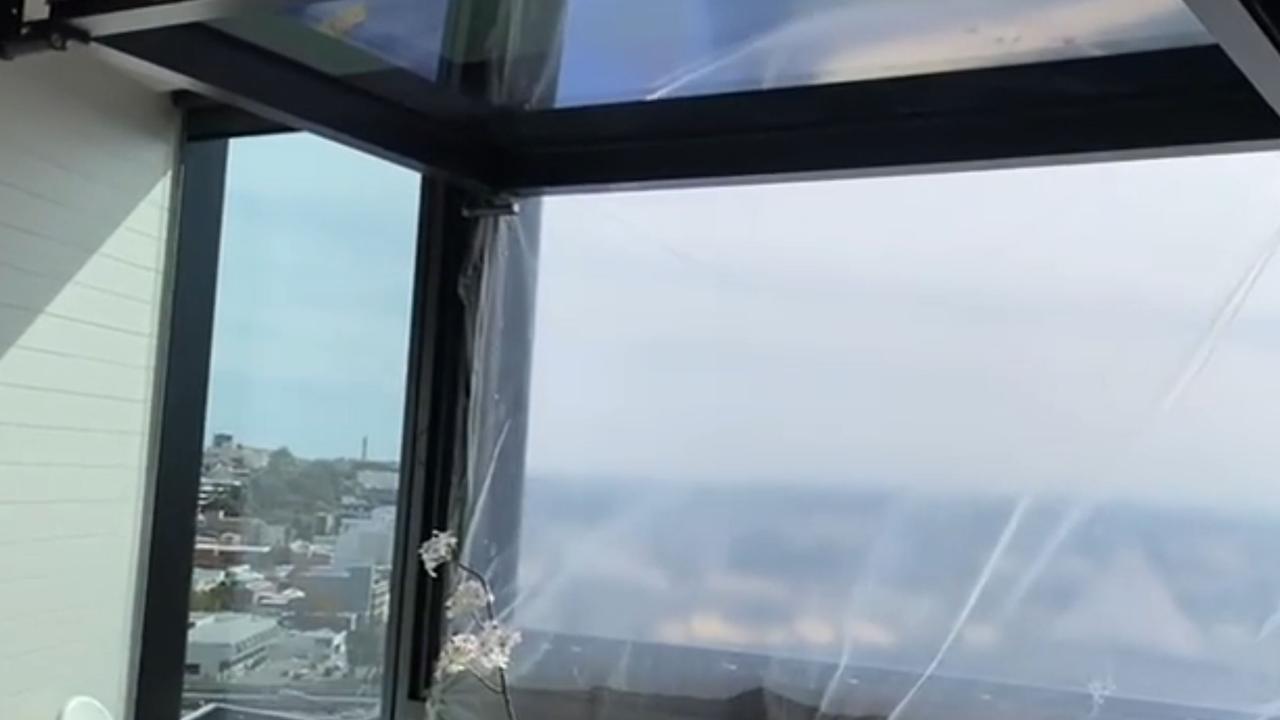Concerns raised whether Sydney’s $2bn new tram is the answer to congestion
IT’S popping up all over Australia, but this form of transport is still controversial. Will it actually help with congestion, or just add to the rush hour crush?
FIFTEEN years ago, if you’d asked most Australians to turn their thoughts to trams, Melbourne would immediately come to mind. Fast forward to 2015, and tram networks have sprung up or been extended in Adelaide, Sydney and the Gold Coast while Canberra is thinking of sinking $1 billion into a new system.
But as Sydneysiders grapple with four years of bus diversions and roadworks to create a 12 kilometre line from the CBD to the south eastern suburbs, critics have questioned whether light rail really can cut congestion.
Supporters are having none of it, arguing trams are the only solution to Australia’s rush hour crush.
Yesterday, as Sydney commuters coped surprisingly well with the start of light rail works, NSW opposition leader Luke Foley said trams were great — for Melbourne.

“Building a light rail system down the central spine of the city is the wrong transport project for Sydney,” said Mr Foley who backs truncating the line just short of the CBD at Central station.
“Melbourne has the width in its city streets for trams, Sydney doesn’t. We’re building a congestion nightmare for the CBD.”
While Mr Foley acknowledged there was little Labor could do to halt the project, he said the $2 billion price tag would be better spent on new railway stations and boosting bus services.
It’s a sentiment shared by a vocal band of residents in Surry Hills, a leafy neighbourhood which the trams will plough through. Shops have already closed down in anticipation of disruption, said David Siebert of campaign group People Unite Surry Hills, and the 70 metre trams would cause serious problems on narrow streets.
“They’re the size of a jumbo jets, shy of three meters. It’s totally inappropriate to be combined with people and bikes.”

Mr Siebert said if the government really cared about jams it would axe the tolls on the cross-city tunnel to encourage cars to avoid the CBD.
Professor David Hensher of the University of Sydney’s Institute of Transport and Logistics Studies, said the light rail debate had become clouded by emotion. Tram fans were pitted against bus lovers when the discussion should be about the most effective way to increase movement around the CBD.
“The real test of success shouldn’t be do we love light rail, but what are the benefits to travelling public?”
Prof Hensher said commuters wouldn’t take kindly to being forced off buses onto trams, the new system would not have the capacity of the buses it replaced, journey times would be longer and other solutions — such as a bus-only tunnel beneath the city — had been dismissed out of hand.
If only Sydneysiders could experience Brisbane’s busways, he said, they might not be so enthralled by trams.
“It acts like a railway, it has stations, but it carries more people in the peak than Sydney’s Western Line.”
Transport for NSW, the body planning the project, said numerous tram alternatives were considered including a CBD bus tunnel. But coming in at a cool $2 billion, it didn’t stack up financially and wouldn’t increase access for the trainless south east.
“Light rail will have substantially more capacity than the buses it will replace,” said a spokesman. “Each set will carry the equivalent of nine buses and operate at four minute intervals in the CBD during peak times.”
City of Sydney Lord Mayor Clover Moore, who has been a vocal supporter of light rail for many years, told news.com.au “until last week, George St was clogged up with a conga line of 6000 slow moving buses each day”.
While she had concerns about some aspects of the project, including its route through Surry Hills, trams would be more reliable, quicker and take up less road space than buses.
“Light rail is the solution to the gridlock. That’s what years of research showed, it’s what gave the business community the confidence to get behind this project, and it’s why the state government is now building light rail.”
Dr Matthew Burke, an expert in transport planning at Griffith University, said he sees parallels between Sydney’s squabbles and the arguments on the Gold Coast prior to the opening of its new tram line in 2014.
“There were doubters that the whole project would fail, no one would use the trams, it would be a complete waste of money and none of that came to fruition.”

In fact, 20,000 passengers were using the G:link system daily, the Queensland Government has confirmed a seven kilometre extension while vehicle traffic in some areas was down five per cent. Sydney’s new light rail would be even more successful, he predicted.
“Sydney CBD is at crush load at the moment, so if you want to increase the movement of people, you have to look to high occupancy transport and light rail is more efficient than buses.”
Dr Burke said suggestions the new light rail wouldn’t be able to pack in the passengers currently using the buses were off the mark.
“You carry a lot of air in the buses. Sure, they’re full in the morning when they’re going into the city but they’re empty coming out.”
The new system would provide “two way movement”, he said, by connecting not just the CBD but also a major university, hospital and sporting precincts at its tail end.
“If it’s going to work anywhere it’s going to work there.”




